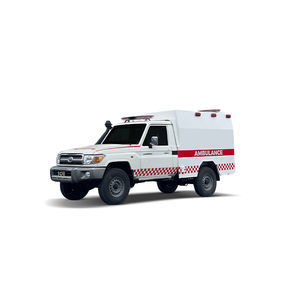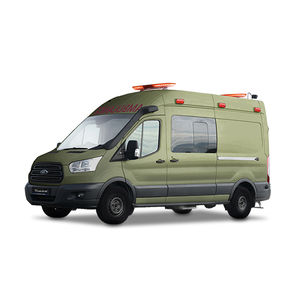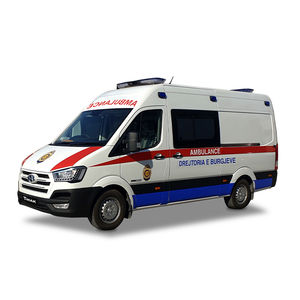
- Company
- Products
- Catalogs
- News & Trends
- Exhibitions
Van ambulance NEGATIVE PRESSURE
Add to favorites
Compare this product
fo_shop_gate_exact_title
Characteristics
- Configuration
- van
Description
The Timak Negative Pressure Ambulance is a Fully Equipped Life Support Ambulance with A Negative Pressure Air System
• Designed for the transport of patients with airborne contagious diseases.IMG_1792
• It is fitted with a HEPA filter that traps minuscule contagions and prevents them from escaping to the environment.
• The inside air pressure is kept 12Pa lower than the surrounding environment, thereby preventing the natural flow of air from inside to outside. The air circulation system replenishes the air twelve times within an hour.
• Designed for the transport of patients with airborne contagious diseases.
• It is fitted with a HEPA filter that traps minuscule contagions and prevents them from escaping to the environment.
• The inside air pressure is kept 12Pa lower than the surrounding environment, thereby preventing the natural flow of air from inside to outside. The air circulation system replenishes the air twelve times within an hour.
How the Negative Pressure System Works
• The TIMAK Negative Pressure Ambulance has a negative pressure air filtration system for the transport of patients with airborne contagious diseases.
• The air pressure inside the ambulance is kept 12Pa lower than the outer air pressure.
• Due to the pressure difference, air from the inside is prevented from escaping to the surrounding environment.
• The Negative Pressure Ambulance is fitted with one or two HEPA filters (depending on vehicle type).
• HEPA or high-efficiency particulate absorbing filters, trap contagions as tiny as 0.3 microns, which include viruses and bacteria.
Catalogs
No catalogs are available for this product.
See all of Timak Shpk‘s catalogsRelated Searches
- First response vehicle
- Mobile health vehicle
- Van first response vehicle
- Truck mobile health vehicle
- Box body ambulance
- Intensive care mobile health vehicle
- Off-road ambulance
- Type A ambulance
- Type B ambulance
- Bus mobile health vehicle
- General medicine mobile health vehicle
- Intensive care ambulance
- Laboratory mobile health vehicle
- Type C ambulance
- Emergency mobile health vehicle
- Van mobile health vehicle
- Rescue ambulance
- 4-stretcher ambulance
- Box body mobile health vehicle
- Transfer ambulance
*Prices are pre-tax. They exclude delivery charges and customs duties and do not include additional charges for installation or activation options. Prices are indicative only and may vary by country, with changes to the cost of raw materials and exchange rates.










